It’s the eve of Hallowe’en…
The shops are full of toffee apples, zombie costumes for dogs and pumpkins ripe for carving. Families are getting ready to send their children out ‘trick or treating’ for armfuls of sweets. However, did you know that today’s candy and ghost fuelled Hallowe’en celebrations are a mutation of an old Celtic festival, which originally marked the start of winter?
The history of Hallowe’en has a long, hazy and fascinating past. Far too complicated to explain in this small blog post. Nonetheless, a few of us from the Research Library at the National Museum of Scotland thought you might need some last-minute advice regarding costumes and spell casting for tomorrow. So we have collated a small selection of scans from books in our collection and we hope they will inspire all you witches and hobgoblins out there.
Old Scottish Customs
First we discovered this book, which has a rather dark description of Hallowe’en. Note how the traditional witch’s cat was not black cat, but a Tabby cat. In the final section it states:
“Tis Hallowmasses e’en
And round the holy green
The fairy elves are seen
Tripping light.”
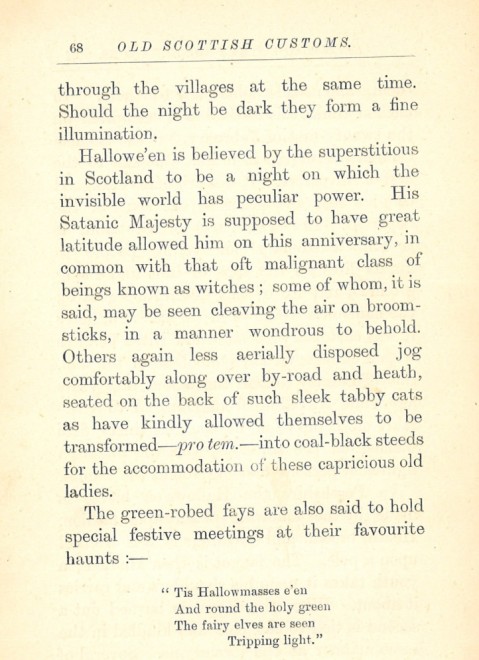
This second description sheds more light on Hallowe’en’s ancient roots, where the satanic majesty is not involved. If this text is to be believed, the fact that it’s not falling on a Wednesday means we are in for a good winter. As it states here:
“When Hallowmas is on Wednesday, it is afflictive after it” (Nuair is Di-ciadain an t-samhainn is iargaineach na deilgn).”
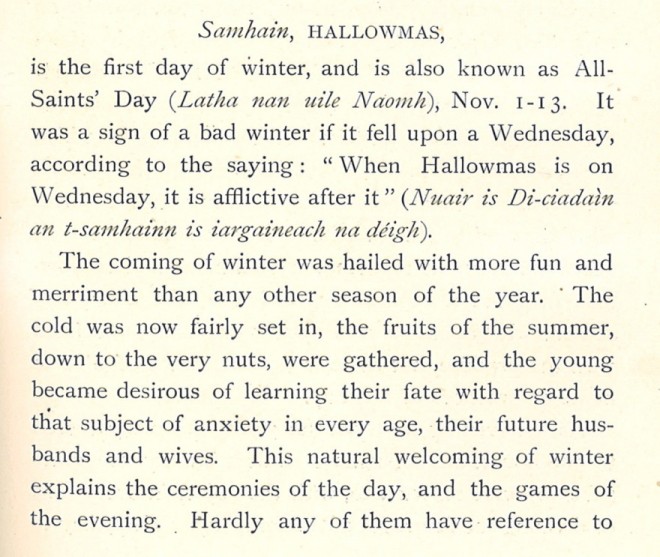
Costumes
Unlike nowadays, when you can quickly buy your perfect ghoulish costume from the supermarket, in the past you would have had to make your own outfit or go to a haberdashery store to pick up all the accessories.
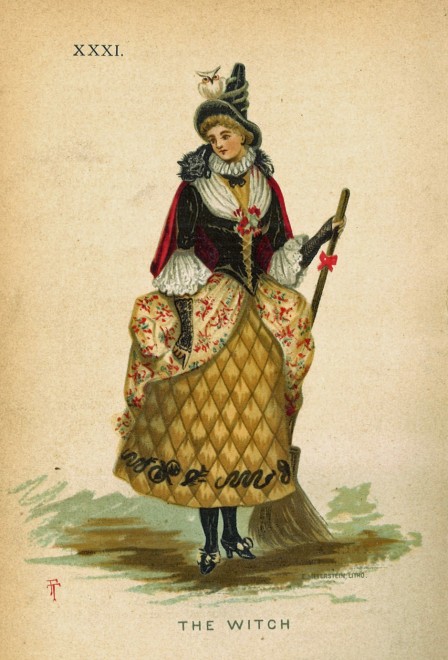
This book plate from Arden Holt’s book shows a very pretty yet traditional depiction of a witch. Complete with a cat on her shoulder, a snake-decorated skirt and the non-optional broomstick.
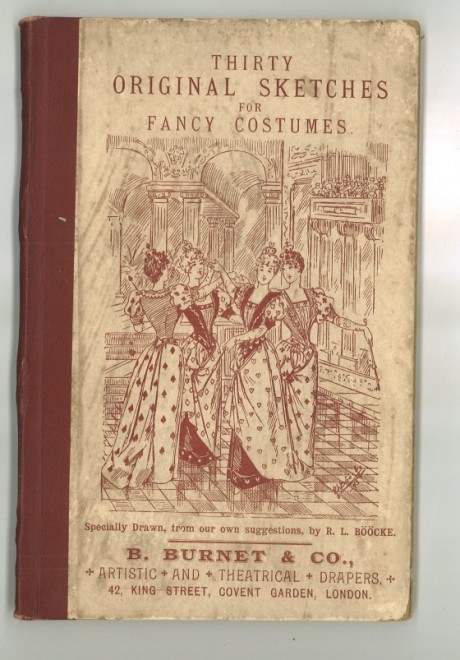
The witch was clearly a popular costume even back then. Here is another take on a witchy outfit, this time we get to see the list of supplies required to create the look at home. Note the use of a natural stuffed bat!
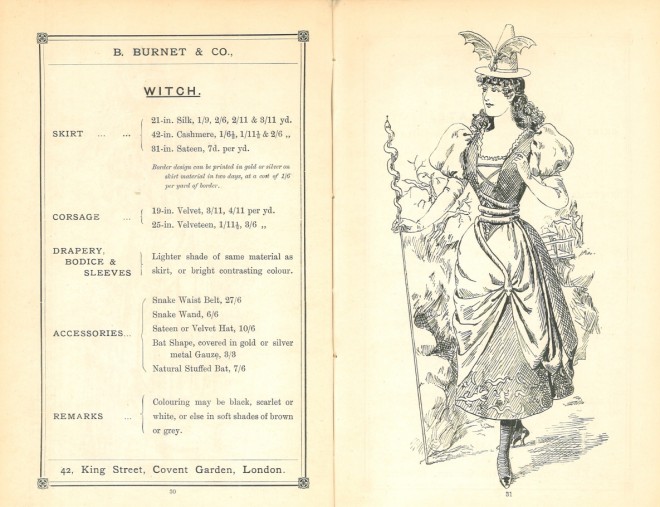
And here is another beautiful costume idea…
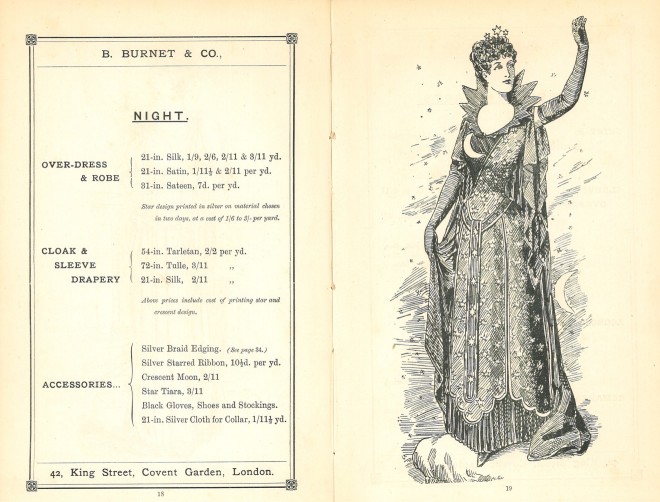
There was of course just as much emphasis on what the men wore to fancy dress balls back in Victorian times.
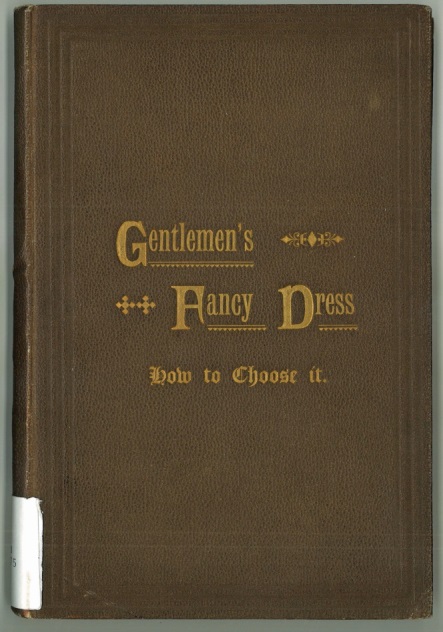
This volume, also from 1882, gives advice on what a man should choose and includes everything from an aquarium… to a variety of earls and clowns!
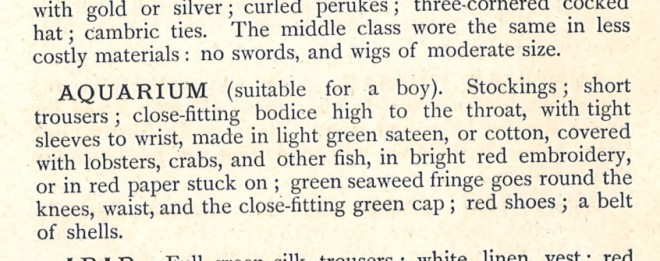
And here are some sketches to give gents some inspiration for what to wear.
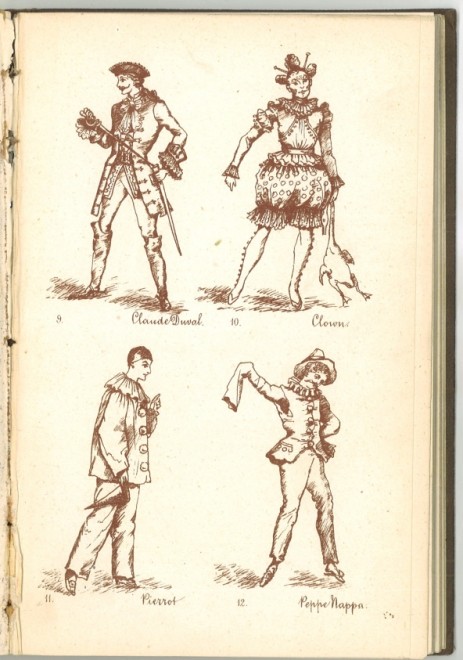
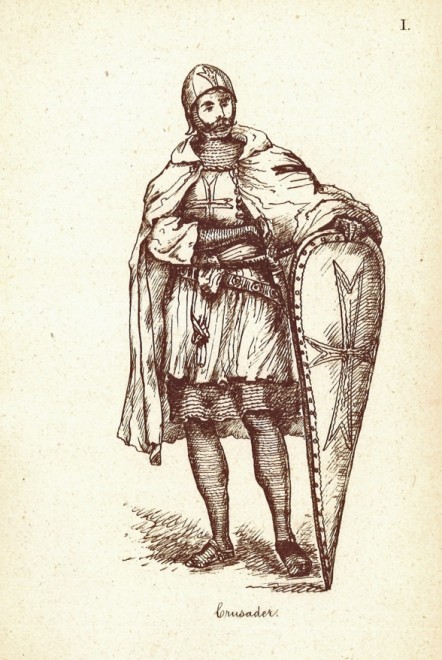
Lots of ideas there and hopefully that’s the outfit sorted!
So now it’s time to do a little divination. Of course, as the veil between the two worlds is thinnest on Hallowe’en and you are in your finest witches’ attire… maybe you need one or two new spells. This book ‘Witchcraft and Second Sight in the Scottish Highlands’ from 1902 definitely has quite a list there – and that’s only Chapter 1.
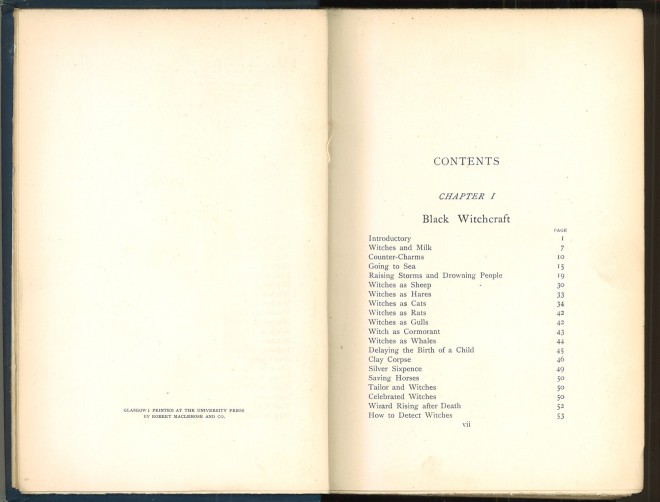
The later chapters share even more intriguing spells for witches of the North…
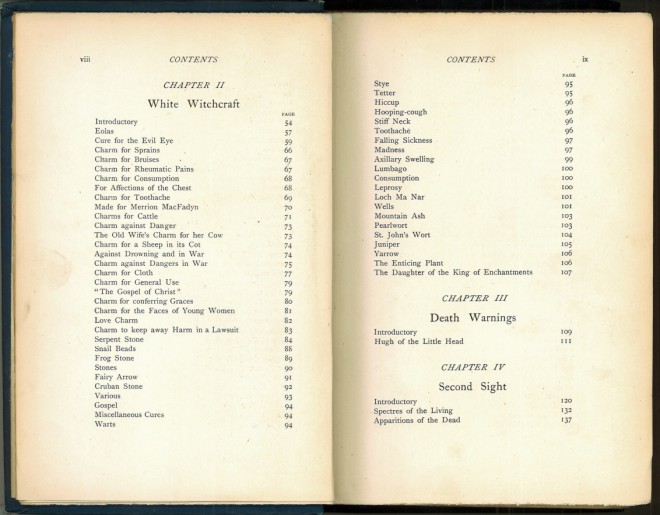
Hallowe’en is fast approaching and we librarians best be going now to carve our Tumshee Lantern and get ready to go out guising!
Happy Halloween!
The Research Library at the National Museum of Scotland is open for all your spell-casting needs, Monday to Friday 10:00 to 17:00.
